Evaluation of Soft Tissue Mobilization in Patients with Temporomandibular Disorder-Myofascial Pain with Referral
- PMID: 33371343
- PMCID: PMC7767373
- DOI: 10.3390/ijerph17249576
Evaluation of Soft Tissue Mobilization in Patients with Temporomandibular Disorder-Myofascial Pain with Referral
Abstract
The aim of the study was functional evaluation of soft tissue mobilization in patients with temporomandibular disorder-myofascial pain with referral. The study group consisted of 50 individuals-37 females and 13 males. The average age was 23.36 ± 2.14 years. All subjects were diagnosed with myofascial pain with referral (diagnostic criteria for temporomandibular disorders). Soft tissue mobilization was applied three times. Electromyography of selected masticatory muscles was performed six times-before and after the treatment. After each mobilization, a decreasing tendency of muscular activity was observed in the entire study group. The Friedman test indicated that mobilization altered the activity of the right temporal muscle (p = 0.00010), both masseters (p = 0.0000), right sternocleidomastoid (p = 0.00251), left sternocleidomastoid (p = 0.00033), and right and left digastric muscles (p = 0.00045 and p = 0.00000, respectively). With respect to symmetry a statistically significant difference was noted in the case of the sternocleidomastoid muscles (p = 0.00729). In conclusion, soft tissue mobilization seems to be effective in the relaxation of masticatory muscles in patients with temporomandibular disorders. Our findings proved that soft tissue mobilization does not improve the symmetry and synergy of the masticatory muscles limited by dental occlusion.
Keywords: electromyography; masticatory muscles; myofascial pain with referral; orofacial rehabilitation; soft tissue mobilization; temporomandibular joint.
Conflict of interest statement
The authors declare no conflict of interest.
Figures
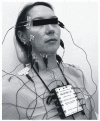
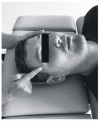
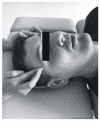
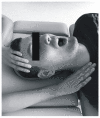
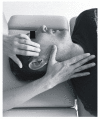
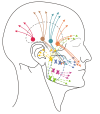
Similar articles
-
Comparative Evaluation of Occlusion before and after Soft Tissue Mobilization in Patients with Temporomandibular Disorder-Myofascial Pain with Referral.Int J Environ Res Public Health. 2021 Jun 18;18(12):6568. doi: 10.3390/ijerph18126568. Int J Environ Res Public Health. 2021. PMID: 34207403 Free PMC article.
-
The role of soft tissue mobilization in reducing orofacial and general complaints in a patient with Kimmerle anomaly and temporomandibular joint disorder: A case report.Cranio. 2021 Jan;39(1):74-87. doi: 10.1080/08869634.2018.1560616. Epub 2019 Jan 4. Cranio. 2021. PMID: 30609909
-
Relationship among Cervical Spine Degeneration, Head and Neck postures, and Myofascial Pain in Masticatory and Cervical Muscles in Elderly with Temporomandibular Disorder.Arch Gerontol Geriatr. 2019 Mar-Apr;81:119-128. doi: 10.1016/j.archger.2018.12.004. Epub 2018 Dec 7. Arch Gerontol Geriatr. 2019. PMID: 30554035
-
Myofascial Temporomandibular Disorders at a Turning Point: Pragmatic or Evidence-Based Management?Dent Clin North Am. 2023 Apr;67(2):335-348. doi: 10.1016/j.cden.2022.12.003. Epub 2023 Feb 1. Dent Clin North Am. 2023. PMID: 36965935 Review.
-
Myofascial pain in temporomandibular disorders: Updates on etiopathogenesis and management.J Bodyw Mov Ther. 2021 Oct;28:104-113. doi: 10.1016/j.jbmt.2021.07.015. Epub 2021 Aug 8. J Bodyw Mov Ther. 2021. PMID: 34776126 Review.
Cited by
-
Comparative Evaluation of Occlusion before and after Soft Tissue Mobilization in Patients with Temporomandibular Disorder-Myofascial Pain with Referral.Int J Environ Res Public Health. 2021 Jun 18;18(12):6568. doi: 10.3390/ijerph18126568. Int J Environ Res Public Health. 2021. PMID: 34207403 Free PMC article.
-
Smiling, Yawning, Jaw Functional Limitations and Oral Behaviors With Respect to General Health Status in Patients With Temporomandibular Disorder-Myofascial Pain With Referral.Front Neurol. 2021 May 24;12:646293. doi: 10.3389/fneur.2021.646293. eCollection 2021. Front Neurol. 2021. PMID: 34108927 Free PMC article.
-
Immediate Effects of the Mandibular Muscle Energy Technique in Adults with Chronic Temporomandibular Disorder.Clin Pract. 2024 Nov 25;14(6):2568-2579. doi: 10.3390/clinpract14060202. Clin Pract. 2024. PMID: 39727790 Free PMC article.
-
The Rainbow and the Umbrella of Temporomandibular Disorders-Total Antioxidant Capacity and Total Oxidant Status in Patients with Myofascial Pain with Referral.J Clin Med. 2025 Jun 6;14(12):4022. doi: 10.3390/jcm14124022. J Clin Med. 2025. PMID: 40565768 Free PMC article.
-
Use of Surface Electromyography to Evaluate Effects of Therapeutic Methods on Masticatory Muscle Activity in Patients with Temporomandibular Disorders: A Narrative Review.J Clin Med. 2024 Feb 5;13(3):920. doi: 10.3390/jcm13030920. J Clin Med. 2024. PMID: 38337614 Free PMC article. Review.
References
-
- Simons D.G., Travell J.G., Simons L.S. Travell & Simons’ Myofascial Pain and Dysfunction: Upper Half of Body. Volume 1 Lippincott Williams & Wilkins; Philadelphia, PA, USA: 1999.
-
- Mense S., Gerwin R.D. Muscle Pain: Diagnosis and Treatment. Springer Science & Business Media; Berlin/Heidelberg, Germany: 2010.
Publication types
MeSH terms
LinkOut - more resources
Full Text Sources
Medical

